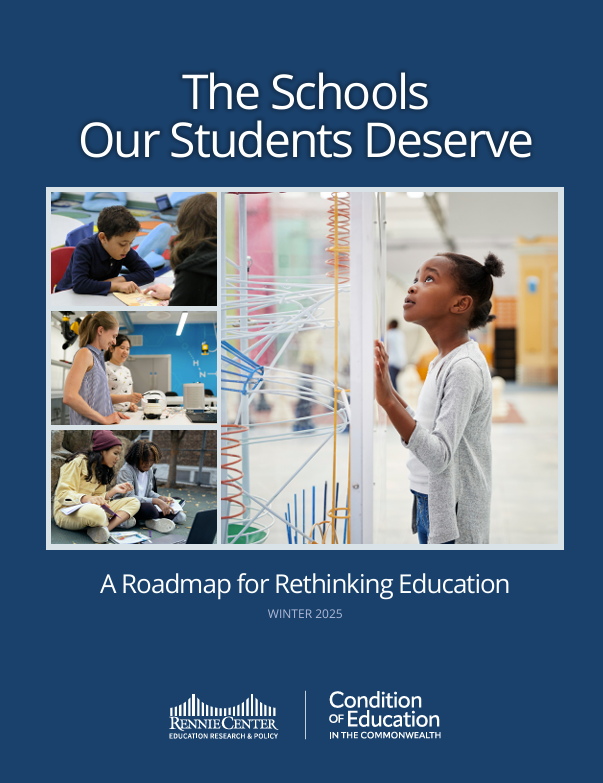A key piece of our Condition of Education in the Commonwealth project, the Action Guide provides research-informed recommendations for statewide actions—policies, investments, and the expansion of best practices—that have the potential to improve student outcomes.
 2025 ACTION GUIDE
2025 ACTION GUIDEThe Schools Our Students Deserve: A Roadmap for Rethinking Education
This Action Guide points to trends in chronic absenteeism, student disengagement, and growing achievement gaps to highlight the urgent need to rethink the structure of education. A substantial body of research points to a large divide between how schools operate and how students learn. This report argues that Massachusetts, a longtime leader in education, has tremendous potential to be a pioneer in transformative educational models.
What is the purpose of school? The goal may be to prepare students for participation in a democratic society, or impart a shared foundation of knowledge and foster social mobility. But ask students and you might get a different answer. As one young person told us, “School doesn’t prepare you for a career. It prepares you to become the teacher.”
The data echoes this sentiment. Even before the pandemic, 75% of students felt negatively about school. Since then, chronic absenteeism has been on the rise. And only 11% of Massachusetts eighth graders have a favorable view of their school.
As technology radically transforms how we work, communicate, and solve problems, classrooms feel cut off from the dynamic, interconnected, fast-changing world just beyond their walls. A growing body of research points to a large divide between how schools operate and how students learn. If we really want to address inequities, if we want to engage students, if we want graduates to be prepared for life in the modern world, we need to rethink everything—the structure of schooling, the rhythms of the school day, the way we teach, and even what we teach.
Our 2025 Condition of Education Action Guide is a bold invitation to fundamentally reconsider how we think about and pursue progress in education. To build schools that immerse students in learning experiences that are both relevant and deeply meaningful—experiences that prepare them for life—we must move forward with intentionality and innovation.
This Action Guide makes the case for a new approach to education reform. First, we review the science of learning, drawing out key principles that ensure schools are engaging, relevant, and impactful for all students. Then, we turn to innovative school models to examine how these principles are being applied in practice. Finally, we offer recommendations to the field, highlighting the need for a systematic commitment to research and development to sustain the complex but essential work of educational innovation across the state.
